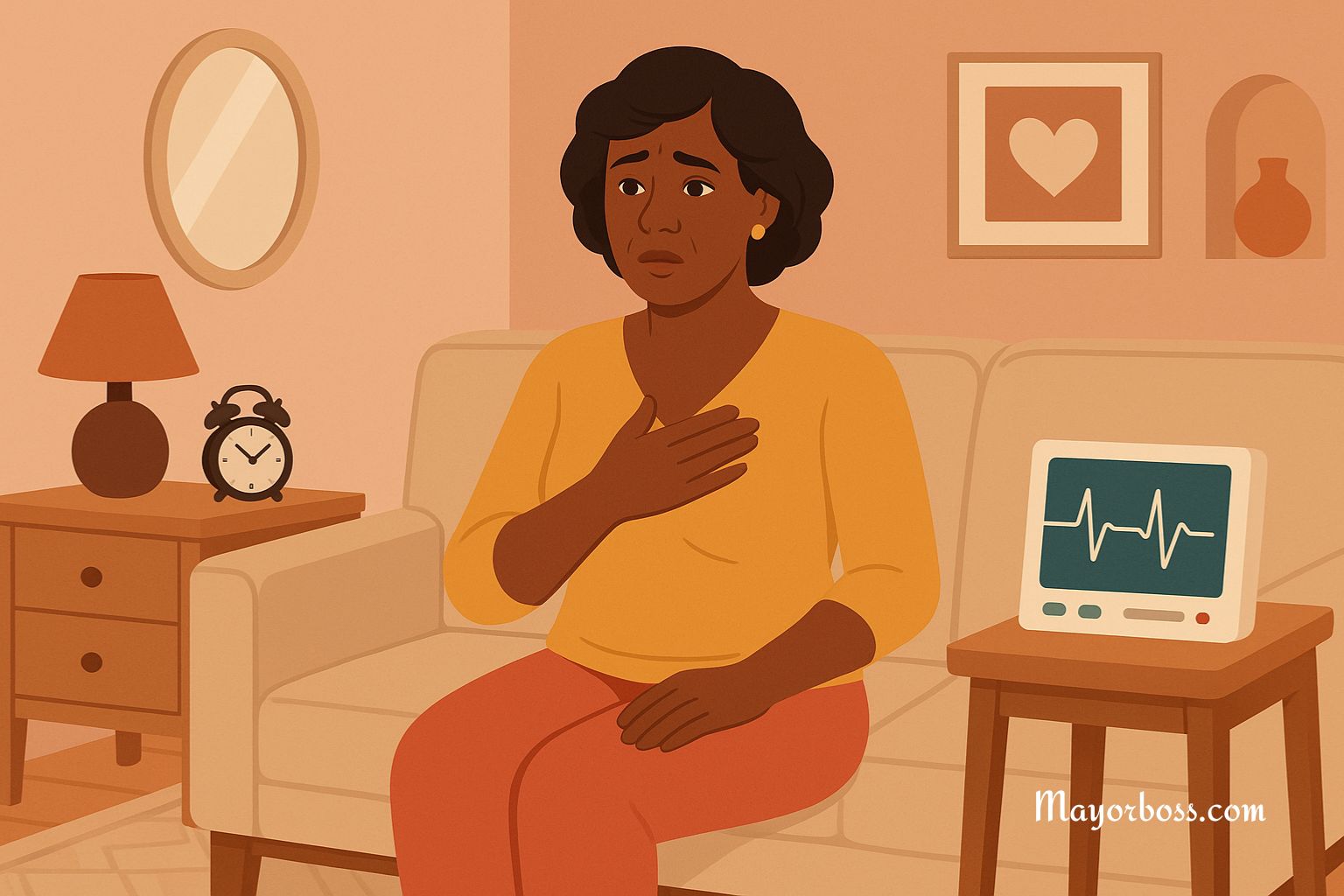What to Know About Bradycardia (Slow Heart Rate)
Bradycardia is a slower than normal heart rate. In most adults, a normal resting heart rate ranges from 60 to 100 beats per minute. If your heart beats fewer than 60 times per minute, it’s considered bradycardia. For some people, this isn’t a problem. But for others, it can mean the heart isn’t pumping enough oxygen-rich blood to the body. Keep reading to learn everything you need to know about bradycardia.

What Exactly Is Bradycardia?
Bradycardia means your heart is beating too slowly. This doesn’t always mean there’s something wrong. For example, well-trained athletes often have slow heart rates because their hearts work efficiently. But in others, a slow heart rate might signal a problem with the heart’s electrical system.1
This system sends out signals that tell the heart when to beat. If these signals are delayed or blocked, the heart can beat too slowly or even pause for a few seconds.
Common Causes of Bradycardia
Several things can cause bradycardia.2 These include:
- Aging: The natural aging process can damage the heart’s electrical system.
- Heart disease: Conditions like coronary artery disease or heart attacks can affect the heart’s rhythm.
- Medications: Some drugs, especially those used to treat heart problems or high blood pressure, can slow the heart.
- Electrolyte imbalance: Low levels of potassium or calcium can affect how the heart beats.
- Sleep apnea: This condition interrupts breathing during sleep and can affect heart rate.
- Hypothyroidism: An underactive thyroid slows many body functions, including the heartbeat.
- Heart block: This happens when the electrical signals in the heart are delayed or don’t reach the lower chambers.
Symptoms
Not everyone with bradycardia has symptoms. But when the heart doesn’t pump enough blood, symptoms can appear.3 These may include:
- Fatigue
- Dizziness or lightheadedness
- Fainting or near-fainting
- Shortness of breath
- Chest pain
- Confusion or memory problems
- Difficulty exercising or doing physical activities
These symptoms happen because your brain and body aren’t getting enough oxygen. If you feel any of them often, especially with a slow heart rate, speak with a doctor.
When Is Bradycardia a Problem?
Bradycardia becomes a concern when it causes symptoms or when the heart cannot pump enough blood to meet the body’s needs. This is more likely if:
- Your heart rate drops below 50 beats per minute, especially when you’re awake
- You experience fainting or serious fatigue
- You have a history of heart problems
In some cases, untreated bradycardia can lead to heart failure, sudden cardiac arrest, or other serious issues.
How Bradycardia Is Diagnosed
To find out if you have bradycardia, your doctor will review your symptoms, medical history, and medications. They may also run tests such as:
- Electrocardiogram (ECG or EKG): Measures the electrical activity of your heart.
- Holter monitor: A portable device you wear for 24 to 48 hours to track your heart rate.
- Event monitor: Used for longer periods to catch irregular heartbeats that happen off and on.
- Blood tests: To check for conditions like thyroid issues or electrolyte imbalances.
- Echocardiogram: An ultrasound that shows how your heart is working.
Treatment Options
The treatment for bradycardia depends on the cause and whether you have symptoms. If it’s not causing any problems, no treatment may be needed. But if it is, options include:
- Medication changes: If a drug is slowing your heart too much, your doctor may adjust or switch it.
- Treating underlying conditions: Managing thyroid problems, sleep apnea, or heart disease can improve heart rate.
- Pacemaker: For more serious cases, especially when the heart’s electrical system is damaged, a pacemaker may be needed. This small device is placed under the skin and helps regulate the heartbeat.4
Lifestyle Tips for a Healthier Heart
Whether you have bradycardia or want to prevent it, keeping your heart healthy is key. Here are a few steps that can help:
- Eat a heart-healthy diet rich in fruits, vegetables, whole grains, and lean proteins.
- Stay active, but check with your doctor about what level of activity is safe.
- Avoid smoking and limit alcohol.
- Manage stress with relaxation techniques or regular movement.
- Keep other health conditions, like diabetes and high blood pressure, under control.
- See your doctor regularly, especially if you have symptoms or risk factors for heart disease.
Final Thoughts
Bradycardia isn’t always dangerous, but it can be if it keeps your heart from supplying enough blood to your body. If you feel unusually tired, dizzy, or short of breath—especially if your pulse is consistently low—don’t ignore it. Talk to your doctor. With the right diagnosis and care, bradycardia can often be managed effectively, allowing you to live well and protect your heart.
